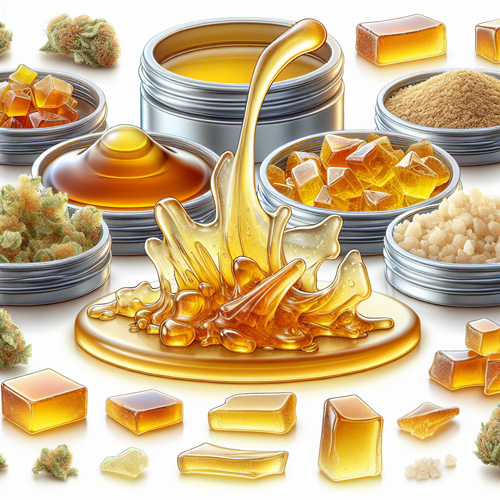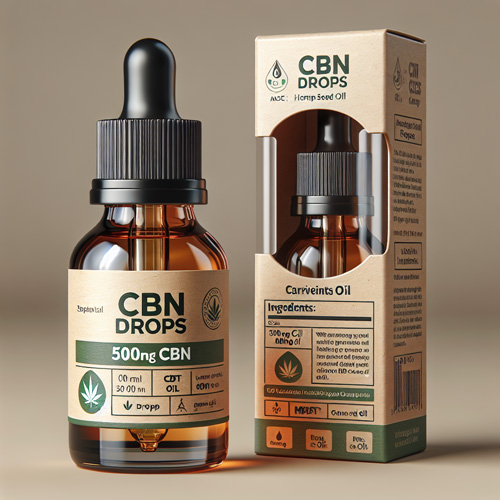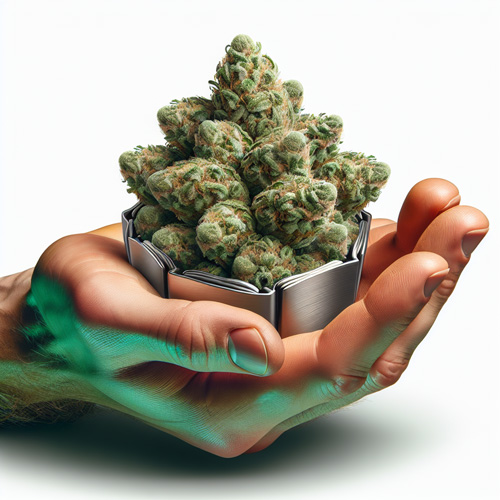
Historical Significance of Hemp Cultivation
Definition of Hemp
Hemp, also known as industrial hemp, refers to the variety of the Cannabis sativa plant that is cultivated specifically for its fibers, seeds, and other industrial uses.
It has been cultivated for centuries and holds great historical significance. Hemp plants have been utilized for a wide range of purposes, such as the production of raw materials for synthetic fibers, building materials, and even as a source of lamp oil. The cultivation of hemp dates back to ancient times, with records of its use dating back to the 19th and 20th centuries.
Despite its association with cannabis, hemp differs from marijuana in that it contains only trace amounts of THC, the psychoactive compound responsible for the recreational effects of marijuana.
As such, hemp has had a long history of legal cultivation and use in various industries, making it an important agricultural crop worldwide.
Historical Significance of Hemp
Hemp cultivation holds immense historical significance as an industrial and versatile crop. Throughout the 18th and 19th centuries, it played a pivotal role in various economic sectors. As a raw material, hemp was used to produce a wide range of essential products. Its fibers were particularly valued for making ropes, textiles, and paper. Hemp oil extracted from the seeds had various industrial purposes, including use as lamp oil and in the production of paints and varnishes.
Due to its exceptional strength and durability, hemp became the preferred material for technical textiles. It was extensively used in shipbuilding, specifically for sails and rigging because of its resilience in harsh maritime conditions.
However, the hemp industry experienced a decline during the 18th and 19th centuries. The rise of cotton as a more profitable crop led to a shift in focus away from hemp cultivation. Additionally, the invention of synthetic fibers further contributed to the decline of the hemp industry. These new materials offered cheaper and more easily produced alternatives to hemp-based products.
Despite its decline, the historical importance of hemp cannot be undermined. Its versatility as a raw material and its crucial role in economic sectors contributed significantly to various industries. Today, efforts are being made to revive and reimplement hemp cultivation, recognizing its potential as a sustainable and eco-friendly alternative to synthetic materials.
Keywords: hemp industry, raw material, textiles, decline, cotton. (190 words)
Pre-20th Century History
Hemp cultivation has a long and storied history that dates back to pre-20th century times. The use of hemp can be traced back thousands of years, making it one of the oldest crops cultivated by humans. Its origins can be found in ancient civilizations such as China and Mesopotamia, where it was used for a wide range of purposes.
From fiber production for clothing and rope to its use in building materials and medicinal purposes, hemp was highly valued for its versatility and practicality. In fact, it is believed that the plant’s cultivation and use can be dated back to at least 2800 BCE. Throughout the centuries, hemp remained a vital crop for numerous societies, playing a crucial role in economic activities and providing sustenance and wealth for many communities.
Its historical significance as a valuable and sustainable resource cannot be underestimated.
Origin of Hemp Cultivation
Hemp cultivation has a rich history that dates back thousands of years, with its origins rooted in Asia, particularly in China. The ancient Chinese were among the first to cultivate hemp plants for various purposes, primarily for making rope and fishnets. As early as 4500 BC, hemp cultivation was already well-established in China.
Archaeological excavations and written records provide concrete evidence of the early cultivation and use of hemp in ancient China. These records reveal that hemp was grown for its fibers, which were then spun into strong and durable ropes and used in fishing nets. The cultivation of hemp was so significant in ancient China that it became deeply ingrained in the daily lives and practices of its people.
Through meticulous excavations, artifacts such as hemp fabrics and ropes have been discovered, demonstrating the ancient practice of hemp cultivation. These findings, combined with written accounts in historical texts such as the Book of Documents and the Book of Songs, shed light on the long-standing tradition of hemp cultivation in China.
The origin of hemp cultivation can be traced back to Asia, specifically China, where its early use in making ropes and fishnets dates back thousands of years. Through archaeological excavations and written records, we can confirm the historical significance of hemp cultivation in ancient China.
Use of Cannabis Sativa in Ancient Times
The use of Cannabis Sativa, commonly known as hemp or marijuana, dates back to ancient times and was utilized by various cultures for its versatile properties. In ancient China, hemp was cultivated for its fibers, which were spun into ropes and used in fishing nets. Additionally, hemp seeds were a valuable food source, rich in essential nutrients.
The cannabis plant also played a significant role in ancient medicinal practices. In Chinese culture, cannabis was used as a remedy for various ailments, including pain relief and treating digestive issues. Egyptian and Assyrian cultures utilized cannabis for its psychoactive properties, often using it in religious ceremonies and as a means of relaxation.
Classical records further attest to the historical significance of cannabis. Homer’s Odyssey makes mention of a plant with powerful hallucinogenic effects, believed by some experts to be cannabis. Pliny the Elder, a Roman naturalist, wrote about cannabis as a therapeutic herb and described its ability to induce sleep.
Overall, the use of C. Sativa in ancient times demonstrates its importance in various aspects of society. From its cultivation for fibers and food to its medicinal and psychoactive properties, cannabis played a significant role in the daily lives and beliefs of ancient civilizations.
Role of Henry VIII in Popularizing Industrial Hemp Production
Henry VIII played a crucial role in popularizing industrial hemp production during his reign in the 16th century. His policies and support for Indian hemp cultivation helped encourage its widespread production in England.
Henry VIII recognized the immense potential of hemp as a versatile and valuable raw material. He understood that hemp plants could be used to produce a wide range of products, from building materials to fabric and paper. To promote the hemp industry, he actively encouraged farmers to cultivate hemp crops on a large scale.
Under Henry VIII’s policies, departments of agriculture were established to oversee and regulate hemp production. These departments provided guidance to hemp farmers and ensured the quality of the crop. Henry also imposed penalties on landowners who did not allocate a certain percentage of their land to hemp cultivation, further encouraging its growth.
Furthermore, Henry VIII’s support for hemp extended beyond policies. He personally used hemp products and promoted their use among the nobility. His preference for hemp fabric and rope helped popularize its use in fashion and naval industries. This royal endorsement significantly boosted the reputation and demand for hemp.
Thanks to Henry VIII’s policies and personal support, England became one of the largest producers of industrial hemp in Europe during the 16th century. His contributions played a pivotal role in the widespread cultivation and commercial production of hemp, leaving a lasting legacy in the history of hemp industry.
19th century: Expansion of Industrial Hemp Cultivation & Its Uses
During the 19th century, there was a significant expansion of industrial hemp cultivation and an increasing recognition of its various uses. Several states emerged as leaders in the hemp industry, including Kentucky, Missouri, and Illinois. Demand for hemp increased as it became a vital raw material for numerous industries.
While the demand for hemp used in sails declined with the advent of steam-powered ships, there was still a continued need for hemp in ropes and rigging. Hemp fibers proved to be exceptionally strong and durable, making them ideal for maritime applications. The use of hemp ropes remained prevalent in the shipping industry, ensuring the safe navigation of vessels.
The nineteenth century also witnessed a surge in hemp production during World War I. Hemp became a valuable resource for producing essential wartime supplies. The fiber was used to make uniforms, tents, and other military equipment. Governments actively promoted hemp cultivation to meet the growing demand for these materials.
The expansion of industrial hemp cultivation during the 19th century was driven by the increased awareness of its versatility and economic potential. From its use in ropes and rigging to its value in manufacturing materials for war efforts, hemp played a crucial role in various industries. This period marked a significant chapter in the history of hemp cultivation, showcasing its wide range of applications and its importance as a valuable agricultural and industrial crop.
20th Century History
In the 20th century, hemp cultivation continued to play a significant role in various aspects of history. Despite facing legal restrictions and being overshadowed by new synthetic materials, hemp still found its place in industrial and agricultural sectors.
The versatility of hemp plants allowed them to be utilized in the production of raw materials for a wide range of products, from building materials to fabric. Additionally, hemp’s medicinal properties were recognized, leading to further exploration into its potential uses for medicinal purposes.
While hemp faced challenges in the 20th century, its historical significance remained as it continued to be a valuable crop with immense potential for various industrial purposes.
Emergence of Synthetic Fibers and Decline in Hemp Production
The emergence of cheap synthetic fibers had a significant impact on the decline of hemp production. After World War I, federal legislation was introduced to regulate hemp production due to its association with marijuana. This legislation, coupled with the availability of synthetic fibers, led to a decrease in demand for high-quality domestic hemp fiber.
In the 1950s, politics and the growing popularity of synthetic fibers further contributed to the downfall of the American hemp industry. Lobbying from synthetic fiber manufacturers and their association with the government led to increased restrictions on hemp cultivation. This, combined with the perception of hemp as a drug-producing plant, resulted in a significant decline in hemp production.
The resilience and versatility of hemp fiber had made it a valuable resource for centuries. However, the advent of synthetic fibers, which offered similar properties at a lower cost, created a shift in the market. Hemp, once a thriving industry, became marginalized and overshadowed by the synthetic fiber market.
Overall, the emergence of synthetic fibers and political factors played a crucial role in the decline of hemp production. While hemp has seen a resurgence in recent years due to its environmental benefits and various applications, it is essential to acknowledge its historical significance and the challenges it faced during the 20th century.
Resurgence of Interest in Hemp Crop in the 1990s
In the 1990s, the United States witnessed a remarkable resurgence of interest in hemp cultivation. This shift in attitude towards hemp can be traced back to the rediscovery of its immense potential uses and benefits, prompting a reevaluation of its legal status.
During the 1970s, growing of hemp was completely banned due to its association with its psychoactive cousin, marijuana. However, as research and education expanded, it became evident that hemp was not a recreational drug but a valuable industrial crop with a wide range of applications. Unfortunately the powers-that-be did not distinguish hemp from marijuana for decades.
The global impact of this rediscovery cannot be overstated. As the world began to grapple with the environmental consequences of industrialization, the need for sustainable alternatives in various sectors became evident. Hemp, with its ability to grow rapidly and require fewer pesticides, presented itself as a viable solution.
The hemp industry experienced a resurgence in the 1990s as more countries recognized the potential of this ancient plant. From building materials and paper to textiles and biofuel, the versatility of hemp contributed to its growing popularity.
The demand for sustainable alternatives, coupled with increased knowledge of hemp’s benefits and the willingness to revisit its legal status, led to a rejuvenated hemp farming industry in the 1990s. This resurgence not only revitalized the economic potential of hemp cultivation but also highlighted the importance of sustainable practices in a rapidly changing world.
Modern Uses for Industrial Hemp Crop
The cultivation of industrial hemp has witnessed a significant resurgence in recent years, as both governments and industries recognize the countless possibilities and benefits offered by this versatile plant.
With its multitude of applications and sustainable qualities, industrial hemp is quickly emerging as a game-changer in various sectors. From construction materials and textiles to paper and biofuels, the modern uses for industrial hemp are revolutionizing industries and fostering a more sustainable future.
We will delve into the diverse applications and advantages of industrial hemp crop in today’s world.
Raw Material for Building Materials & Textiles
Hemp has a rich historical significance as a raw material for building materials and textiles. Dating back to the 19th century, this versatile crop was widely cultivated for hemp stalks’ fibers and used in the construction industry for various purposes.
Hemp’s lightweight properties, combined with its natural resistance to mold and pests, makes it an ideal choice for sustainable construction. It offers excellent breathability, allowing for a healthy indoor environment.
One innovative use of hemp in construction is through hemp-lime panel systems. These panels are created by casting a mix of hemp hurd (the inner part of the stalk) and lime to form solid structures that are strong, durable, and eco-friendly. The resulting panels provide excellent thermal insulation and thermal mass, contributing to energy efficiency in buildings.
By using a fiber crop of hemp as a building material, we can reduce the environmental impact of construction activities. Hemp is a renewable resource that requires minimal water and pesticides to grow. Moreover, it sequesters carbon dioxide from the atmosphere, making it a carbon-negative option for sustainable building practices.
In addition to construction, hemp has been traditionally used as a versatile textile material. Its fibers are strong, lightweight, and have excellent moisture-wicking properties. Hemp fabric is highly durable and becomes softer with each wash, making it a long-lasting choice for clothing, accessories, upholstery, and hemp paper.
Overall, hemp’s historical significance as a raw material for building materials and textiles highlights its versatility, sustainability, and potential for a wide range of applications in both construction and fashion industries.
Nutritional Benefits from Eating Hemp Seeds & Oil
Hemp seeds and oil are highly nutritious and offer a wide range of health benefits. Hemp seeds, also known as hemp hearts, are a rich source of protein, fiber, and essential fatty acids, including omega-3 and omega-6. They also contain vitamins and minerals such as vitamin E, calcium, iron, and magnesium.
Throughout history, hemp seeds have been valued for their nutritional properties. Ancient civilizations, such as the Chinese, Egyptians, and Romans, discovered the benefits of incorporating hemp seeds into their diets. Legends even suggest that warriors and athletes consumed hemp seeds to enhance their strength and stamina.
Over time, the role of hemp seeds as a food source has evolved. In the 20th century, hemp cultivation faced legal restrictions, leading to a decline in their consumption. However, in recent years, hemp seeds have gained popularity again as a superfood, mainly due to their exceptional nutritional profile. They are now recognized for their ability to support heart health, reduce inflammation, and boost immune function.
Hemp oil, derived from hemp seeds, is also highly nutritious. It is an excellent source of essential fatty acids and has a favorable ratio of omega-3 to omega-6. Hemp oil is commonly used in cooking and as a dietary supplement due to its nutty flavor and health benefits.
Hemp seed production and hemp seed oil provide a wealth of nutritional benefits. Their consumption dates back centuries, and they have regained popularity as a superfood in recent years. Incorporating hemp seeds and oil into the diet can contribute to a well-rounded and healthful nutrition plan.
State Regulations on Growing Industrial Hemp
State regulations regarding the cultivation of industrial hemp in the United States have evolved in recent years, thanks to the passage of the 2014 Farm Bill. Under this legislation, states were given the authority to develop pilot programs for industrial hemp cultivation, subject to certain restrictions and guidelines.
To legally cultivate hemp, farmers must comply with specific requirements set forth in both federal and state regulations. The Drug Enforcement Administration (DEA), the United States Department of Agriculture (USDA), and the Food and Drug Administration (FDA) have issued guidelines that outline the rules for growing hemp.
Several states have implemented pilot programs to allow the cultivation of industrial hemp. These programs provide opportunities for farmers and institutions of higher education to participate in hemp cultivation. Interested parties must apply and obtain permits or licenses to grow hemp legally. Each state has its own application process, which typically involves submitting required documentation, paying applicable fees, and adhering to specific regulatory guidelines.
It is important for hemp farmers and institutions to consult their respective state regulations and guidelines to ensure compliance with the law when engaging in industrial hemp cultivation. As the legal landscape continues to evolve, staying informed about state regulations and maintaining compliance with federal guidelines is crucial for anyone involved in the hemp industry.
Global Impact on the Industry
The legalization of hemp in the 2018 Farm Bill has had a global impact on the hemp industry, creating new challenges and opportunities for the United States. With hemp no longer classified as a controlled substance, farmers, entrepreneurs, and consumers have shown growing interest in this versatile crop.
One major challenge faced by hemp companies in the United States is the need for regulation from the Food and Drug Administration (FDA) regarding the booming CBD industry. While the Farm Bill legalized hemp cultivation, the FDA has yet to establish clear guidelines for CBD products, resulting in confusion and uncertainty for businesses operating in this sector.
In addition, hemp companies have encountered resistance from banking institutions, credit card processors, and tech companies. Due to the close association between hemp and cannabis, which remains prohibited at the federal level, many financial institutions and service providers have been hesitant to support hemp businesses. This has posed significant obstacles for companies seeking the necessary financial and technological infrastructure to flourish in the industry.
Despite these challenges, the hemp industry has seen remarkable growth and opportunity. Farmers have recognized the potential of hemp as a profitable and sustainable crop, offering a wide range of applications from fiber production to CBD extraction. Entrepreneurs have seized upon the market potential of hemp-derived products, such as textiles, building materials, and cosmetics. And consumers are increasingly drawn to the health benefits of CBD, driving demand for a variety of hemp-based products.
Overall, the global impact of the hemp industry following the legalization of hemp in the 2018 Farm Bill has created both challenges and opportunities. With proper regulation and support from financial institutions and service providers, hemp has the potential to become a thriving industry, benefiting American farmers, entrepreneurs, and consumers alike.


































